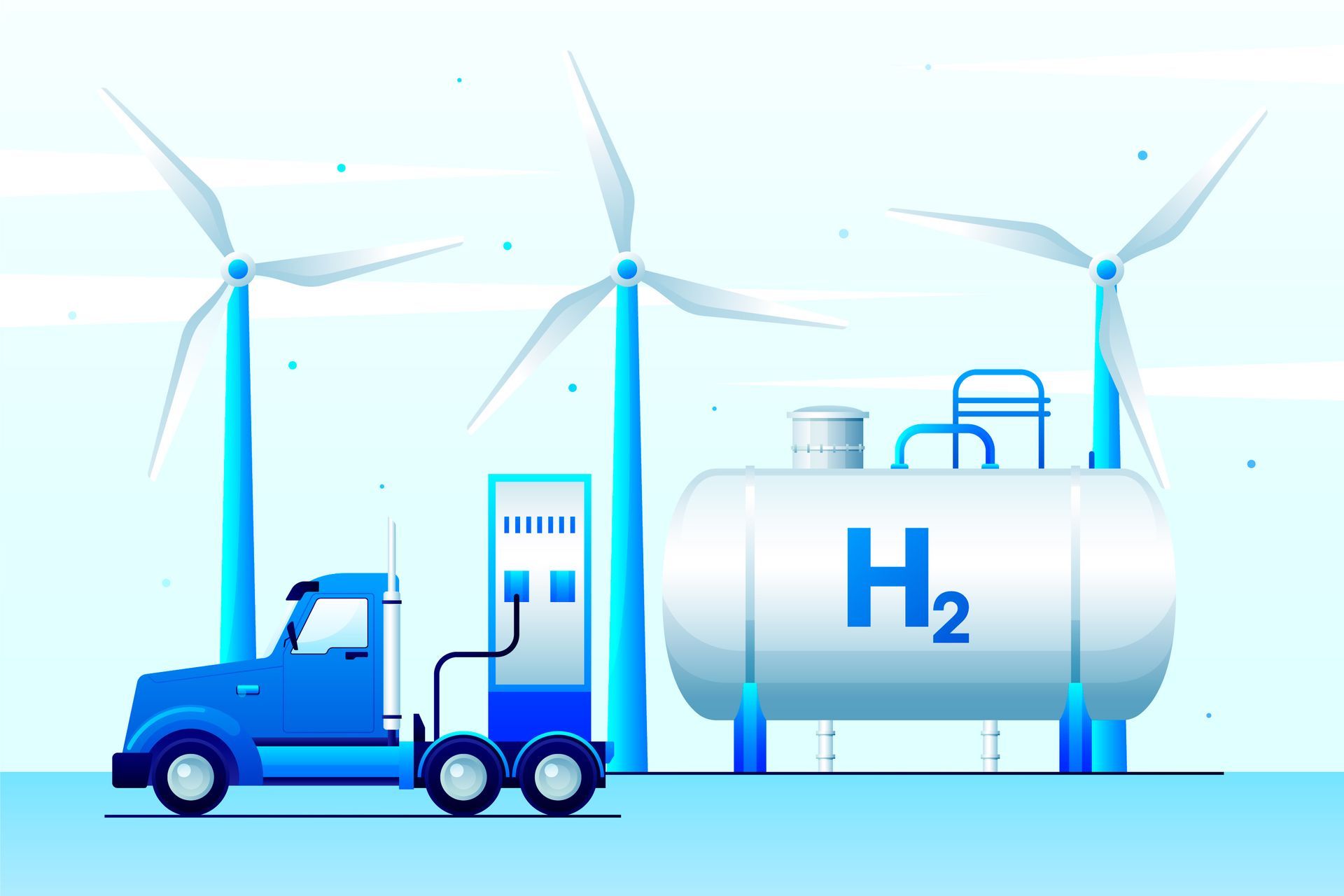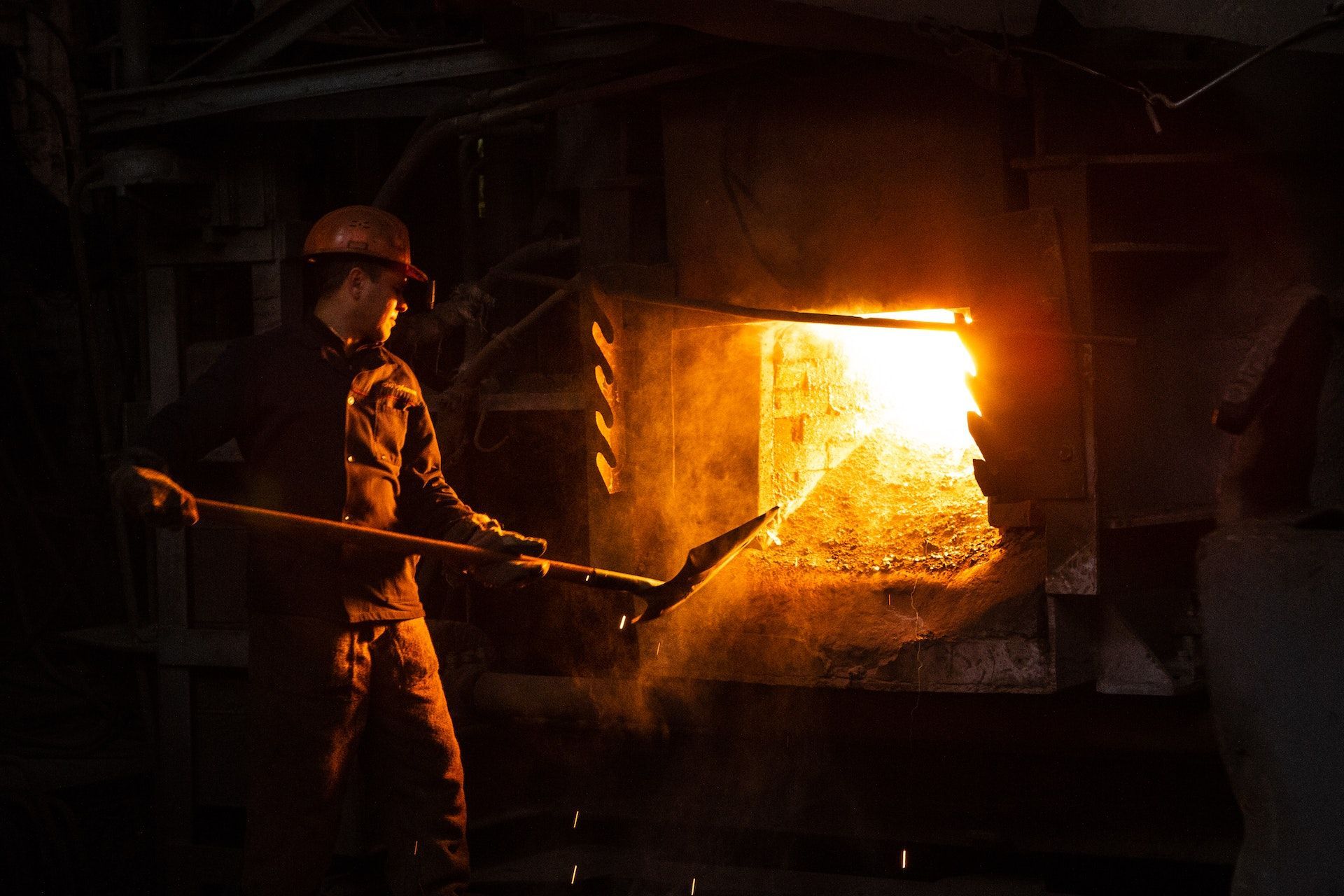About the author: Indiana Lee is a writer and journalist from the Pacific Northwest with a passion for covering workplace issues, environmental protection, lifestyle improvements and more. In her off time she enjoys exploring the wilderness with her two dogs. You can reach her at indianaleewrites (at) gmail.com
Why people aren't biologically suited for modern jobs
Author: Indiana Lee
Over 80% of all jobs in the United States are sedentary. Most people spend their days sitting at a desk and staring at a computer, only getting up to head to the copy machine or grab lunch with a coworker.
Sound familiar?
Believe it or not, humans weren’t made to spend their days sitting in a chair – no matter how ergonomic it is. Our ancestors spent the majority of their time hunting, gathering, and naturally leading more active lifestyles.
While today’s creature comforts have made it easy to be more sedentary, we could learn a thing or two from the past, and what our bodies are biologically designed to do.
With that in mind, let’s take a closer look at why modern jobs aren’t biologically suited for people. The more you understand the importance of moving your body and staying active, the easier it will be to implement changes at work.
The Science of Sitting
Some have suggested that we’re currently experiencing a fourth Industrial Revolution. However, this stage in modern history is different from the revolutions we’ve experienced in the past. It’s filled with cyber-physical systems and endless technology, including:
- Mobile connection;
- 3D printing;
- Biotechnology;
- Energy storage;
- Quantum computing.
Technology has done some incredible things over the years, and it continues to advance our lives in so many ways. However, as more tech jobs emerge, so does the need for people to sit for long hours, looking at a computer screen or manning the helm of certain devices. Even careers that once required some physical activity, like factory work, are being taken over by technology and automation, leaving those people to seek out different jobs that are likely more sedentary.
The problem? Humans aren’t made to sit for long periods of time. Just because we’ve seen such advancements in technology and other areas doesn’t mean our basic biology has changed. Sitting for extended periods can actually cause harm to your mental and physical health. Some of the risks of sitting at a desk all day include:
- Obesity
- High blood pressure
- High blood sugar
- Increased risk of heart disease
- Diabetes
Some of the mental health issues associated with a sedentary lifestyle include an increased risk of depression and anxiety. You’re also more likely to be fatigued, and experience a lack of motivation.
The Risk of Remote Work
Nowadays, remote work is more popular than ever. It’s been on the rise for a few years, but the COVID-19 pandemic caused it to experience a major surge. It’s a trend that’s likely to continue thanks to advancements in technology.
There are plenty of benefits to working from home. It allows for flexibility, a healthy work-life balance, and less stress. However, there are some health risks associated with working from home that might surprise you. Some of the issues might seem minuscule, like eye strain and boredom. However, working from home can make you less likely to exercise or get any kind of real physical activity.
It can also cause isolation and loneliness, which have both been linked to mental health issues like depression. People are meant to be social creatures. Like almost every other animal, social behavior is important. Spending all of your time alone at home robs you of that kind of interaction, potentially leading to long-term mental and physical health consequences.
Finally, some remote workers feel like they don’t have their privacy or “freedom”. Employers can use time-tracking software, check digital data, or even expect more out of remote workers around the clock since they’re home. That can lead to constant stress and endless pressure that we’re not meant to deal with.
Commuting Concerns
On the flip side, about 74% of Americans commute to work each day, and the average commute time is 55 minutes. For many people, the morning and afternoon commutes are just a normal part of life.
However, working long hours away from home can take a toll on your well-being. Research has shown that spending hours each day working away from home can put you at greater risk of things like:
- Sleep deprivation
- Malnutrition
- Social isolation
If you’re commuting an hour or less each day, the best things you can do to combat these issues are to prioritize sleep, maintain a healthy diet, and practice self-care as much as possible – especially when it comes to maintaining a social life.
Labor-intensive Work Concerns
Other jobs, like truck driving, construction work, or even commercial fishing can take you away from home for weeks (or months) at a time. These professions are often associated with hard labor and isolation — both of which may negatively affect mental and physical health. While you might think that’s more in line with what our ancestors had to deal with, many laborious jobs were done in groups to cut down on the workload, and a sense of community was always prioritized.
There’s no question that we’ve made some incredible advancements over the years. However, it’s important to find a healthy balance when it comes to how we utilize those advancements. People are biologically suited for so many modern jobs, and while we might not be able to make sweeping changes to these careers as a society, each person can do their part to prioritize their health and well-being, in and out of their careers.

More articles!

By EuroScientist Editor
•
07 Sep, 2023
Hydrogen fuel can be made from wood waste in a clean and cost-efficient way at heat and power plants – and its developers hope it could change the narrative around this sometimes-controversial solution. By Steve Gillman & Fintan Burke The costs of scaling up hydrogen power, along with the potential amount of energy and natural resources to produce it, have seen this fuel source face increased scrutiny as a solution against climate change. “The majority of our electricity and hydrogen is produced from fossil fuels. This, of course, is not sustainable as it contributes to climate change,” said Michael Bartlett, a founder of Phoenix Biopower, a company that turns natural waste into combustible gas, like hydrogen. As part of a research project called Bio-FlexGen, Bartlett is developing ‘green hydrogen’ from biomass waste from the forestry sector. “Our ultimate goal is to provide a secure, renewable and low-cost energy for society and industry,” he adds. Bio-FlexGen, and its multidisciplinary team of 14 partners from five EU countries, aim to provide the technology for combined heat and power plants (CHP) that can also generate a supply of green hydrogen in addition to usual outputs of electricity and heat. To make green hydrogen, Bio-FlexGen will use a combination of two main technologies – a gas turbine and a gasifier. First, waste biomass is added in a gasifier at pressure and heated up to 850 Celsius – a temperature so hot that it releases other gases, mainly hydrogen, methane, and carbon monoxide. The next step sees water and steam added to cool before it passes through a cleaning filter. “Once we have cleaned up the gases from the gasifier, we can either send it to the gas turbine for combustion and electricity generation or to a hydrogen production unit,” said Bartlett, adding that this process gives “enormous power” and efficiency to the CHP plant. The high temperatures of this process, over 1400 Celsius in the gas turbine combustor, also result in greater power generation. To ensure a high efficiency, the system is designed to gather waste heat and recycle it back into the gas turbine in the form of hot steam. This, Bartlett says, can result in double the electricity output that is typical for a given amount of biomass. The new approach means the CHP plant then has three modes of operation; 1/ produce heat and electricity efficiently from biomass in the winter 2/, produce green hydrogen and biogenic CO2 from biomass in the summer 3/ utilise hydrogen in the gas turbine for peak power. This flexibility means it can help keep costs low and stable and complements the hourly, weekly and seasonal variability of solar and wind power. Converting critics and pushing EU hydrogen plans ahead Bio-FlexGen’s systematic approach to incorporating green hydrogen could go a long way in negating the main arguments against this renewable energy, primarily the amount of natural resources it requires for its production. According to Rystad Energy, 620 million cubic meters of water are needed to produce 85% of the green hydrogen capacity planned for 2040. However, environmental groups like Greenpeace argue that renewable power alone is not enough to produce the needed amount of green hydrogen. If anything, they claim this may end up increasing fossil fuel demand. But Bio-FlexGen’s green hydrogen production utilises oxygen to drive the gasification process, itself a by-product of green hydrogen production from wind and solar power. “The main advantage of getting hydrogen from biomass compared to wind or solar is that it has less variability and is not dependent on electricity price,” said Bartlett. “It also requires less H2 storage (you store biomass instead) for when the wind doesn't blow.” When producing electricity from biomass in the CHP plant, a lot of steam is needed in the gas turbine for the best effect. In fact, 50% of the exhaust is just water vapour. This water is recovered, treated and recycled back to this process, and an excess of clean water can even be produced for other consumers. When this water is recovered, it also generates large amounts of heat, which the project can use further in district heating networks or other processes. In this way all the energy in the biomass is efficiently used. “We are working very hard to ensure that we are part of a circular biomass utilisation and that we are using hydrogen in the safest possible way,” explains Bartlett, adding that the project will make a “significant contribution to the decarbonisation of the energy system”. The first commercial plant using Bio-FlexGen’s approach is planned for 2030, in which the power plant will operate on biomass in the winter months and use 100% green hydrogen in the summer months, therefore displacing demand for fossil fuels in peak periods – a goal increasingly shared by EU policymakers. Following the war in Ukraine, and the embargo on Russian oil imports into the EU, the European Commission outlined a ‘Hydrogen Accelerator' concept to scale up renewable hydrogen deployment. This ‘REPowerEU Plan’ wants the EU to produce 10 million tonnes of renewable hydrogen by 2030, with the Commission recently proposing criteria that Member States can follow to ensure they produce green hydrogen, including that it only be produced when and where sufficient renewable energy is available. As BioFlexGen’s power plant will operate with up to 100% green hydrogen from solar and wind, with an optimised combination of bioenergy, it is already on course to meet these criteria. Bartlett also believes that the project has brought together “amazing, competent people” that can play a key role in developing green hydrogen further.

By EuroScientist Editor
•
07 Sep, 2023
Author: Jane Marsh Scientists are researching a theory known as positive climate tipping points. While most people talking about tipping points concentrate on their negative consequences, such as irreparable harm to ecosystems, positive tipping points provide a ray of hope. These points may result in favorable and constructive changes to our planet's climate system as the effects of climate change continue. Learn more about the idea of positive climate tipping points, consider their possible advantages and discuss their significance in understanding and tackling the problems caused by climate change. Understanding Tipping Points To fully understand positive climate tipping points, it is essential first to understand what tipping points are. Tipping points are key thresholds in a complex system where a minor change can cause significant and sometimes irreversible changes in the system's behavior. Harmful climate change tipping points may be the first type that comes to mind. These relate to occurrences like the melting of significant ice sheets or the disruption of essential ocean currents, which can have quick and harmful repercussions. However, there are also positive tipping points that may shape the future climate. Positive Climate Tipping Points Unlike negative climate tipping points, positive ones can increase ecosystem resilience and bring about encouraging changes. These turning points take place when certain environmental activities or changes trigger self-reinforcing mechanisms that improve the earth's capacity to absorb carbon dioxide, lower greenhouse gas emissions or support the preservation of vital habitats. Forest preservation and restoration is one illustration of a favorable climate tipping point. As forests grow and recover, they sequester a greater amount of carbon dioxide, which lowers the levels of greenhouse gases in the atmosphere. This process creates a positive feedback loop that encourages greater forest development and improves the ability of these ecosystems to control the temperature. Relevance and Implications of Positive Tipping Points Positive climatic tipping points must be recognized and utilized for mitigation and adaptation initiatives to succeed. Scientists and decision-makers can create targeted interventions to improve the planet's resilience and lessen the effects of climate change by identifying and utilizing these tipping points. Climate tipping points can also encourage and inspire group action. They provide concrete instances of how individual and group activities, such as reforestation programs, sustainable land management techniques and ecosystem restoration projects, can significantly contribute to the fight against climate change. The general public may take inspiration in carrying out sustainable behaviors or supporting laws that help effect positive change. Emphasizing these positive tipping points' potential advantages and ripple effects encourages individuals at all levels. While positive climate tipping points have great potential, it is important to recognize that our understanding of them is still developing. Further research is necessary. These tipping points require identification, monitoring and measurement, which demands continual study and scientific cooperation. Scientists use advanced modeling approaches and thorough data analysis to find potential positive tipping points across different ecosystems. Researchers are also looking into how positive and negative tipping points are connected. Scientists can create comprehensive plans to negotiate the intricacies of climate change and maximize beneficial results by thoroughly comprehending the relationships between these tipping points. Positive Climate Tipping Points Could Be a Game-Changer Positive climate tipping points demonstrate optimism in the fight against climate change. If people locate and utilize these tipping points, we may be able to develop self-reinforcing mechanisms that positively affect our planet's climate system. Scientists, decision-makers and people can take proactive measures in climate change prevention and adaptation by comprehending the significance of positive tipping points and their potential ramifications. The complexity of positive climate tipping points must be further understood through ongoing research and monitoring projects to successfully navigate the challenges of climate change and create a more resilient and sustainable future.

By EuroScientist Editor
•
18 Jul, 2023
It’s no secret that the planet is getting warmer, but July 2023 saw record-high temperatures that really turned heads. 2023 is an El Niño year — in addition to human-caused climate change, the Earth is undergoing an expected cycle of exceptionally warm weather that occurs every few years.
This double whammy has many people reaching for their water bottles and cranking up the AC. Why are scientists so worried about the heat?

By EuroScientist Editor
•
03 Jul, 2023
Hydrogen fuel cells have garnered a lot of attention recently. As the global conversation shifts to emissions-free energy, many people want to know how fuel cells work, whether they could replace internal combustion engines someday and if they can power homes. Here are answers to common questions about the technology.



